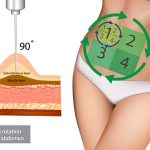1. Understanding Hyperpigmentation: Causes and Types
Hyperpigmentation is a common skin concern that causes certain areas of the skin to appear darker than the surrounding skin. This happens when excess melanin, the pigment responsible for skin color, is produced in specific spots. While hyperpigmentation is generally harmless, it can be a cosmetic concern for many people.
Common Causes of Hyperpigmentation
Several factors can trigger hyperpigmentation, including:
Sun Exposure
UV rays stimulate melanin production, leading to sunspots or freckles over time. This is why sunscreen is essential in preventing and managing hyperpigmentation.
Hormonal Changes
Fluctuations in hormones, especially during pregnancy or due to birth control pills, can cause melasma—a type of hyperpigmentation that appears as brown or gray patches on the face.
Post-Inflammatory Hyperpigmentation (PIH)
This occurs after skin inflammation or injury, such as acne breakouts, cuts, or burns. PIH often appears as dark marks left behind after a pimple heals.
Types of Hyperpigmentation
The most common types of hyperpigmentation include:
| Type | Description | Common Causes |
|---|---|---|
| Melasma | Patches of dark discoloration, usually on the face. | Hormonal changes, sun exposure. |
| Sunspots (Liver Spots) | Small dark spots that appear on sun-exposed areas like the face and hands. | Cumulative sun exposure over time. |
| Post-Acne Marks (PIH) | Dark spots left behind after acne heals. | Pimple inflammation and irritation. |
Understanding these causes and types of hyperpigmentation is the first step in finding the right treatments. In the next section, we’ll explore dermatologist-recommended solutions to effectively reduce and manage hyperpigmentation.
2. Topical Treatments: Dermatologist-Approved Ingredients
When it comes to treating hyperpigmentation, topical treatments are one of the most effective and accessible options. Dermatologists often recommend specific ingredients that target dark spots and promote an even skin tone. Below, we break down some of the most powerful skincare ingredients for hyperpigmentation.
Key Ingredients for Hyperpigmentation Treatment
These dermatologist-approved ingredients work by reducing melanin production, increasing cell turnover, and brightening the skin.
| Ingredient | How It Works | Best For |
|---|---|---|
| Hydroquinone | A skin-lightening agent that inhibits melanin production, making dark spots fade over time. | Stubborn dark spots, melasma, and post-inflammatory hyperpigmentation (PIH). |
| Retinoids (Retinol, Tretinoin) | Increase cell turnover and stimulate collagen production to help fade discoloration. | Aging-related pigmentation, acne scars, and overall skin texture improvement. |
| Vitamin C | A powerful antioxidant that brightens skin, neutralizes free radicals, and reduces excess melanin production. | Dull skin, sunspots, and uneven skin tone. |
| Niacinamide | Reduces inflammation, strengthens the skin barrier, and slows down pigment transfer to skin cells. | Sensitive skin, redness-prone areas, and mild discoloration. |
| Kojic Acid | A natural ingredient derived from fungi that inhibits tyrosinase, an enzyme involved in melanin production. | Mild hyperpigmentation and gentle brightening. |
How to Incorporate These Ingredients Into Your Routine
Start Slowly to Avoid Irritation
If youre new to active ingredients like retinoids or hydroquinone, start with a lower concentration and gradually increase usage to prevent irritation.
Use Sunscreen Daily
No matter which treatment you choose, sunscreen is essential. Many hyperpigmentation treatments make your skin more sensitive to UV rays, so daily SPF 30+ is a must.
Combine Ingredients Wisely
Certain combinations can enhance results—like using vitamin C in the morning and retinoids at night. However, avoid mixing strong actives like hydroquinone and retinoids without consulting a dermatologist.
Be Patient and Consistent
Most treatments take weeks or even months to show visible improvement. Stick with your routine consistently for the best results.
Topical treatments are a great way to manage hyperpigmentation effectively. By choosing the right ingredients and applying them correctly, you can achieve a brighter and more even complexion over time.

3. Professional In-Office Treatments for Faster Results
For those struggling with stubborn hyperpigmentation, professional in-office treatments can provide faster and more noticeable results. Dermatologists often recommend advanced procedures that target dark spots, sun damage, and uneven skin tone more effectively than over-the-counter products. Here are some of the most popular dermatologist-approved treatments for hyperpigmentation.
Chemical Peels
Chemical peels use acids like glycolic acid, salicylic acid, or trichloroacetic acid (TCA) to exfoliate the skin and remove pigmented cells. They help improve skin texture, reduce dark spots, and promote new cell turnover.
Benefits of Chemical Peels:
- Effective for melasma, sunspots, and post-inflammatory hyperpigmentation
- Can be customized based on skin type and severity of pigmentation
- Encourages collagen production for smoother skin
Laser Therapy
Laser treatments like Fraxel and Intense Pulsed Light (IPL) work by targeting excess melanin in the skin. These treatments break down pigmentation while stimulating collagen production for an overall brighter complexion.
| Treatment | How It Works | Best For |
|---|---|---|
| Fraxel Laser | Uses fractional laser technology to resurface the skin and fade dark spots. | SUN DAMAGE, AGE SPOTS, MELASMA |
| Intense Pulsed Light (IPL) | Pulses of light target melanin to break up pigmentation without damaging surrounding skin. | SUNSPOTS, REDNESS, UNEVEN SKIN TONE |
Microneedling
This procedure involves tiny needles creating micro-injuries in the skin, triggering collagen production and allowing better absorption of brightening serums. Microneedling is great for treating post-inflammatory hyperpigmentation caused by acne.
Main Advantages:
- Minimally invasive with little downtime
- Helps reduce acne scars along with pigmentation issues
- Improves overall skin texture and firmness
Microdermabrasion
A gentle exfoliation technique using a diamond-tipped device or fine crystals to remove dead skin cells. This helps fade superficial pigmentation and improves overall skin radiance.
Why Choose Microdermabrasion?
- Painless with no downtime
- Suits most skin types, even sensitive skin
- Ineffective for deep pigmentation but great for mild discoloration
If you’re dealing with persistent hyperpigmentation that doesn’t improve with topical treatments, consulting a board-certified dermatologist about these in-office procedures could be the key to achieving clearer, more even-toned skin.
4. Sun Protection: The Key to Preventing Worsening Pigmentation
One of the most important steps in managing hyperpigmentation is protecting your skin from the sun. Exposure to UV rays can trigger melanin production, making dark spots more pronounced and harder to treat. By incorporating proper sun protection into your daily routine, you can prevent existing pigmentation from worsening and reduce the risk of developing new discoloration.
Why Daily Sunscreen Matters
Wearing sunscreen every day—even on cloudy days or when staying indoors—helps shield your skin from harmful UV radiation that can exacerbate hyperpigmentation. Dermatologists recommend using a broad-spectrum sunscreen that protects against both UVA and UVB rays to ensure complete coverage.
Choosing the Right SPF
SPF (Sun Protection Factor) determines how well a sunscreen protects against UVB rays. For those dealing with hyperpigmentation, dermatologists generally recommend an SPF of at least 30. However, if you spend extended time outdoors, opting for SPF 50+ provides even better protection.
| SPF Level | Protection Level | Recommended Use |
|---|---|---|
| SPF 30 | Blocks ~97% of UVB rays | Daily use for general outdoor exposure |
| SPF 50+ | Blocks ~98% of UVB rays | Extended sun exposure or sensitive skin |
Additional Protective Measures
Sunscreen alone isnt enough—combining it with other protective measures enhances its effectiveness. Here are some extra steps you can take:
- Wear a Wide-Brim Hat: A hat with at least a 3-inch brim helps shield your face from direct sunlight.
- Sunglasses with UV Protection: Protect the delicate skin around your eyes by wearing sunglasses that block both UVA and UVB rays.
- Avoid Peak Sun Hours: Try to stay indoors or in shaded areas between 10 AM and 4 PM when the suns rays are strongest.
- Cover Up with Clothing: Lightweight, long-sleeved shirts and pants provide additional protection from harmful UV exposure.
5. Lifestyle and Skincare Habits for Long-Term Results
Maintaining the results of your hyperpigmentation treatments requires a consistent skincare routine and mindful lifestyle choices. Dermatologists emphasize that long-term success comes from preventing new dark spots while keeping your skin healthy and radiant.
Establishing a Consistent Skincare Routine
A well-structured skincare routine is essential for managing hyperpigmentation. Using dermatologist-recommended products consistently can enhance treatment results and prevent discoloration from returning.
Key Steps in a Daily Routine
| Step | Recommended Products | Purpose |
|---|---|---|
| Cleanser | Gentle, non-stripping formula with brightening ingredients like vitamin C | Removes dirt, oil, and impurities while prepping skin for treatment products |
| Toner | Hydrating toner with niacinamide or licorice extract | Balances skin and enhances absorption of active ingredients |
| Serum | Brightening serum with ingredients like vitamin C, tranexamic acid, or kojic acid | Targets hyperpigmentation and promotes even skin tone |
| Moisturizer | Lightweight, hydrating formula with ceramides or hyaluronic acid | Keeps skin barrier strong and prevents irritation |
| Sunscreen (AM) | Broad-spectrum SPF 30+ with physical blockers like zinc oxide | Prevents UV-induced pigmentation and protects treated areas |
| Exfoliation (2-3x per week) | Chemical exfoliant with AHAs or BHAs | Removes dead skin cells to improve product penetration and brighten complexion |
Avoiding Triggers That Worsen Hyperpigmentation
Certain environmental factors and lifestyle habits can make hyperpigmentation worse. By identifying and avoiding these triggers, you can maintain clearer, more even-toned skin.
Common Triggers to Avoid
- Excessive Sun Exposure: UV rays stimulate melanin production, leading to darker spots. Always wear sunscreen and seek shade when outdoors.
- Picking at Skin: Scratching or picking at acne, scars, or bug bites can cause post-inflammatory hyperpigmentation (PIH).
- Harsh Skincare Products: Strong exfoliants or irritating ingredients can cause inflammation, making dark spots more noticeable.
- Lack of Hydration: Dehydrated skin may struggle to heal properly, prolonging the appearance of pigmentation issues.
Integrating Brightening Products Safely
Using brightening products effectively without overloading your skin is key to achieving lasting results. Overuse of certain ingredients can lead to irritation or sensitivity.
How to Use Brightening Ingredients Wisely
- Pace Yourself: Introduce new brightening products slowly to avoid irritation. Start with a few times per week before increasing frequency.
- Avoid Mixing Too Many Actives: Combining multiple strong actives (e.g., retinol + high-concentration vitamin C) may cause excessive dryness or peeling.
- Use Sunscreen Religiously: Brightening treatments make your skin more sensitive to the sun, so daily SPF application is crucial.
- Pair with Hydration: Moisturizing well helps balance potential dryness from active ingredients like acids or retinoids.
A combination of smart skincare habits and lifestyle choices will help you maintain the improvements from your hyperpigmentation treatments. By staying consistent with protective measures and using the right products in moderation, you can enjoy long-term results with healthier, glowing skin.


